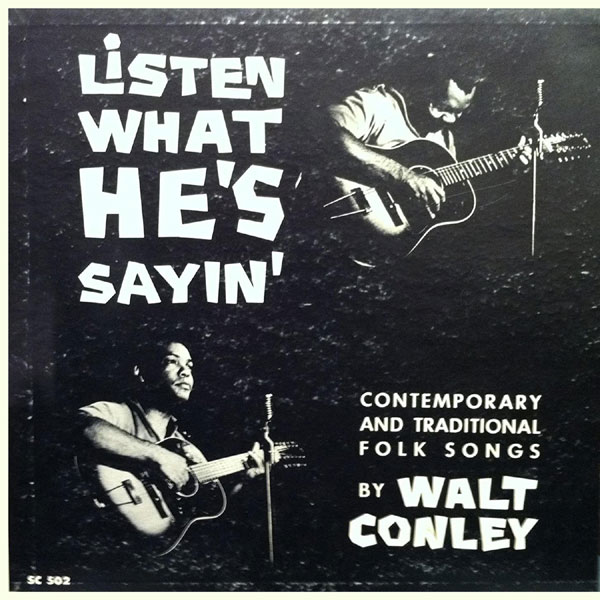
 |
Sleeve Notes
I've spent many sleepless nights trying to figure what move to make next, where I was going in folk music, what type songs I could sing, and how to sing them. I listened to, and talked with 'folk people' from New York to Alaska, and back down to Mexico. All across Canada I looked for new songs, different styles and methods of presentation then I tried talking with people indirectly associated with the field the listeners, the hip folksters, the "hootenanny housewife", and even those who refuse to dig My purpose was to keep up with this raging now thing called folk entertainment, and I plan to keep on trying.
But one morning I nosed my Ford car and fired body info my hometown of Denver after a 1000 mile trek from Chicago. As I threw my junk on the lawn, in the process of unpacking the thought suddenly hit me — what the hell am I looking for? My style and presentation were set thirteen years ago when I sang my first song around a campfire at a ranch in New Mexico That song had a phrase in it, "A man's gotta do what a man's gotta do". And I guess what I'm trying to say is I will always be trying to improve, but I set a pattern at that time, and it's my own — and I hope you like it.
Walt Conley
Who Is Walt Conley? You will know him by his record. He is a man who has known happiness and sorrow, sympathy, and bitterness; and like all of us he has been shaped by his experience. But unlike most of us, Walt Conley has the ability to convey what he is and what he has learned. Whether it's a joyful ballad or a tearful lament, he does more than just sing the song — he makes you feel it. He is the song.
To be a folksinger, a man must know the lore of the people, and the history of the country. It is good for him to have traveled this land — and to have been in a war — because from the land and the people come songs like Wandering, Drifter and the yearning to Settle Down, and from the wars come songs like Roger Young. Walt Conley knows these things Every country has in its history some great and terrible event which has left its mark forever on the minds and hearts of its people — and the people have songs about that event. In the United States it was the Civil War. We sing about that war to remind ourselves of the horror, the dishonor and the futility of turning on one another. On this record, the tragedy of our war is shown most compellingly in the Civil War Trilogy, but it is mitigated somewhat by the hopeful triumph of the Emancipation Centennial song, Hey Nellie, Nellie.
But in spite of the fact that some events and some songs belong only to one people, there is a universality of human experience; and Walt Conley believes that the purpose of folk music is to remind us of that common experience.
Walt cares deeply about people; and it is largely because of that concern that he became a folksinger. His songs are about real people, kind people and cruel ones, those who are happy and those who are not. It is not possible to separate the man from his songs nor from the people he loves. They are a part of him. Together they have formed a major portion of his education — and the breadth and variety of that education are apparent in the hundreds of songs he knows and sings.
Walt Conley has been collecting and singing folk songs for thirteen years, and he has earned the right to be called a "folksinger". The term is widely applied today, and often wrongly. In all fields there are leaders and followers (and copiers of both) — those who warp the true thing into a grotesque parody of itself. Nineteen sixty-three is seeing folk music suffer from an overdose of popularity, a fact which dismays those of us who love it. Folk songs are being adapted to unsuitable styles and mediums by people who do not understand them. But such is the phenomenon of popularity, and perhaps it seems worse because this time it's happening to music we love. Walt knows that folk music is not just a branch of entertainment (though it is that, too), but a heritage which must be preserved, respected and passed on.
He has a deep and big voice (big enough for a 12-string), a wide range and a style uniquely his own. His ballads show the strength of a big man who also can be gentle; and he can sing with equal ease bawdy and raucous ditties or poignant songs of frustration and sorrow.
Above all, he has that quality most important to a folksinger: empathy. He knows what other people feel, and can sing about it. But here we are back where we began. The songs are the man. Walt Conley is all the songs on this album, and many, many more.
Adina L. Rahm